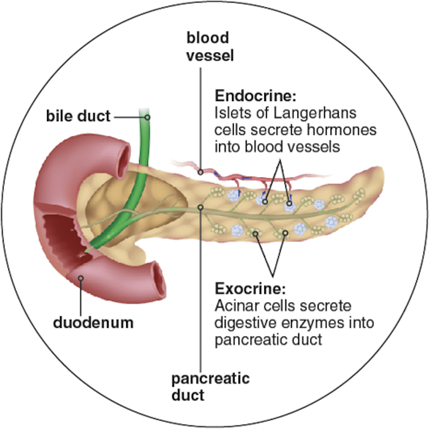The thymus gland secretes hormones called:
Thyroxines; control metabolism.
Melatonins; control circadian rhythms.
Thymosins; control production and differentiation of white blood cells.
Prostaglandins; control strength.
The Correct Answer is C
The thymus gland is an essential part of the immune system that produces and matures T cells, a type of white blood cell that defends the body from infections.
Thymosins also regulate immune cell production and inhibit aging.
Choice A is wrong because thyroxines are hormones produced by the thyroid gland, not the thymus gland.
Thyroxines control metabolism and affect growth and development.
Choice B is wrong because melatonins are hormones produced by the pineal gland, not the thymus gland.
Melatonins control circadian rhythms and sleep cycles.
Choice D is wrong because prostaglandins are not hormones, but lipid compounds that have hormone-like effects.
Prostaglandins control inflammation, blood pressure, muscle contraction, and other functions.
Nursing Test Bank
Naxlex Comprehensive Predictor Exams
Related Questions
Correct Answer is B
Explanation
Kidneys are not part of the lymphatic system.
The lymphatic system is a network of vessels and organs that drain excess fluid from the tissues, transport fats and immune cells, and protect the body from infections.
Kidneys are part of the urinary system, which filters blood, regulates fluid and electrolyte balance, and produces urine.
Choice A is wrong because kidneys do not have a direct connection to the lymphatic system.
Although kidneys have lymphatic vessels in their cortex, they do not originate from the lymphatic system.
Kidneys receive blood from the renal arteries and return it to the renal veins.
The lymphatic vessels in the kidney cortex drain interstitial fluid and immune cells from the kidney tissue to the regional lymph nodes.
Some additional sentences are:
Choice B is right because kidneys are part of the urinary system, not the lymphatic system.
The urinary system and the lymphatic system have different functions and structures in the body.
Normal ranges for kidney function tests include blood urea nitrogen (BUN) of 7 to 20 mg/dL, serum creatinine of 0.6 to 1.2 mg/dL, and glomerular filtration rate (GFR) of more than 90 mL/min/1.73 m.
Normal ranges for lymphatic system tests include white blood cell (WBC) count of 4,000 to 11,000 cells per microliter, lymphocyte count of 1,000 to 4,800 cells per microliter, and immunoglobulin levels of IgG (700 to 1,600 mg/dL), IgA (70 to 400 mg/dL), IgM (40 to 230
mg/dL), IgE (0 to 100 IU/mL), and IgD (0.5 to 5 mg/dL).
Correct Answer is B
Explanation

The pancreas is an organ that has both endocrine and exocrine functions.
As an endocrine gland, it secretes hormones such as insulin and glucagon that regulate blood sugar levels.
As an exocrine gland, it releases substances that neutralize stomach acid and digestive enzymes that break down proteins, fats, and carbohydrates.
Choice A is wrong because the thyroid gland is only an endocrine gland.
It secretes hormones such as thyroxine and calcitonin that regulate metabolism and calcium levels.
Choice C is wrong because the anterior pituitary is only an endocrine gland.
It secretes hormones such as growth hormone, prolactin, and adrenocorticotropic hormone that regulate growth, lactation, and stress response.
Choice D is wrong because the liver is mainly an exocrine gland. It produces bile that helps digest fats and detoxifies the blood.
The liver also has some endocrine functions, such as producing insulin-like growth factor 1 and angiotensinogen, but these are not its primary roles.
Whether you are a student looking to ace your exams or a practicing nurse seeking to enhance your expertise , our nursing education contents will empower you with the confidence and competence to make a difference in the lives of patients and become a respected leader in the healthcare field.
Visit Naxlex, invest in your future and unlock endless possibilities with our unparalleled nursing education contents today
Report Wrong Answer on the Current Question
Do you disagree with the answer? If yes, what is your expected answer? Explain.
Kindly be descriptive with the issue you are facing.
